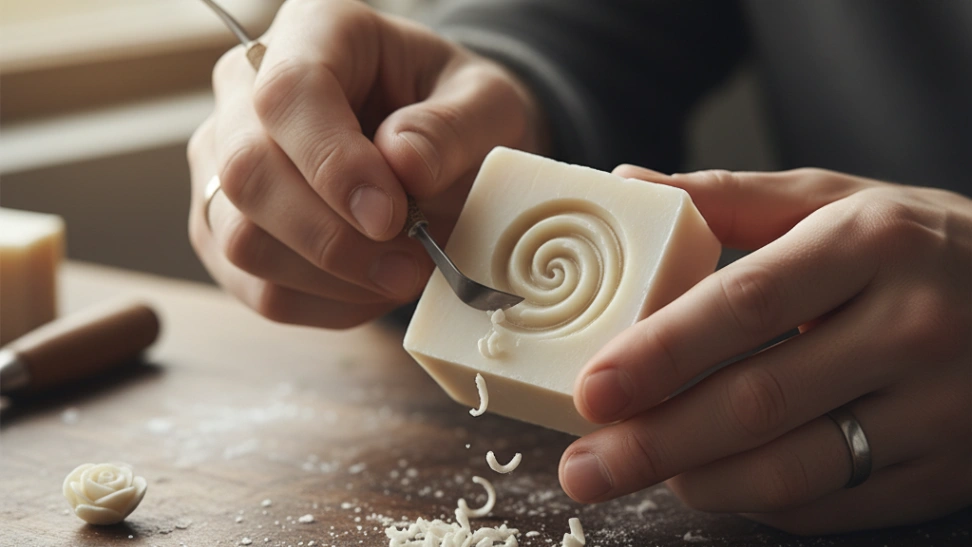The practice of carving soft materials for artistic and decorative purposes has roots stretching back millennia, with ancient civilizations utilizing bone, wood, and stone. While soap itself has been used for hygiene for thousands of years, soap carving as a recognized recreational or artistic pursuit is a more modern phenomenon. Its widespread popularity began in the early to mid-20th century, particularly in regions where soap was readily available and affordable, becoming an engaging activity during times of economic hardship or as a simple pastime. For instance, during the Great Depression, soap carving contests became popular in America, offering a creative outlet and a sense of accomplishment to many. Proctor & Gamble even sponsored national soap sculpture competitions, promoting the artistic potential of their Ivory soap. This era saw a significant surge in interest, establishing soap carving as a legitimate and accessible art form. In Asian cultures, particularly in countries like Thailand, the intricate art of fruit and vegetable carving provided a natural precursor, with similar delicate techniques eventually being applied to soap. The ease of access to materials and the relatively low barrier to entry allowed it to flourish as both a children's craft and a refined artistic expression.
The appeal of soap carving lies in its unique blend of simplicity and potential for sophistication. A standard bar of soap, a craft knife, and a few basic carving tools are all that's needed to begin. This low barrier to entry makes it inviting for those new to sculpting or looking for a relaxing, hands-on activity. The soft, forgiving nature of soap means that mistakes are less daunting than with harder materials like wood or stone; a slip of the knife might only require a slight adjustment to the design or a different approach rather than a ruined project. The aroma of the soap itself adds another sensory dimension to the experience, often creating a pleasant and calming atmosphere during the carving process. As skills develop, carvers can experiment with different types of soap, varying in hardness, scent, and color, allowing for a broader range of artistic expression. Some specialized soaps are even manufactured specifically for carving, offering a denser, more consistent texture.
Beyond individual artistic expression, soap carving can also be a social activity. Workshops and classes devoted to soap carving are increasingly popular, providing a space for enthusiasts to learn new techniques, share tips, and showcase their creations. Online communities and social media platforms are vibrant hubs where carvers can connect, exchange ideas, and find inspiration from around the globe. This sense of community enriches the hobby, transforming a solitary craft into a shared passion. Furthermore, finished soap carvings make delightful, personalized gifts, adding a handmade touch to special occasions. They can also serve as decorative items, infusing spaces with subtle fragrances and artistic flair. The ephemeral nature of soap, being a consumable item, also adds an interesting philosophical dimension; the art piece can eventually be used for its original purpose, dissolving gracefully with time, or preserved indefinitely as a cherished display.
For those considering taking up soap carving, the journey begins with selecting a suitable bar of soap – typically a firm, unscented variety like Ivory or a specialized carving soap – and acquiring a basic set of carving tools, which often includes a small craft knife, a U-gouge, and a V-gouge. Online tutorials and beginner's guides are abundant, offering step-by-step instructions for simple projects like leaves, flowers, or geometric patterns. Starting with straightforward designs helps build confidence and refine essential techniques such as scoring, cutting, and shaping. As proficiency grows, carvers can delve into more complex three-dimensional forms, intricate details, and even multi-piece assemblies. The tactile satisfaction of transforming a mundane object into a work of art is profoundly gratifying. Whether you're seeking a quiet, meditative escape, a creative challenge, or a unique gift-making skill, soap carving offers a delightful and accessible pathway into the world of sculpture, continually surprising with the beauty that can emerge from such an unassuming material.



